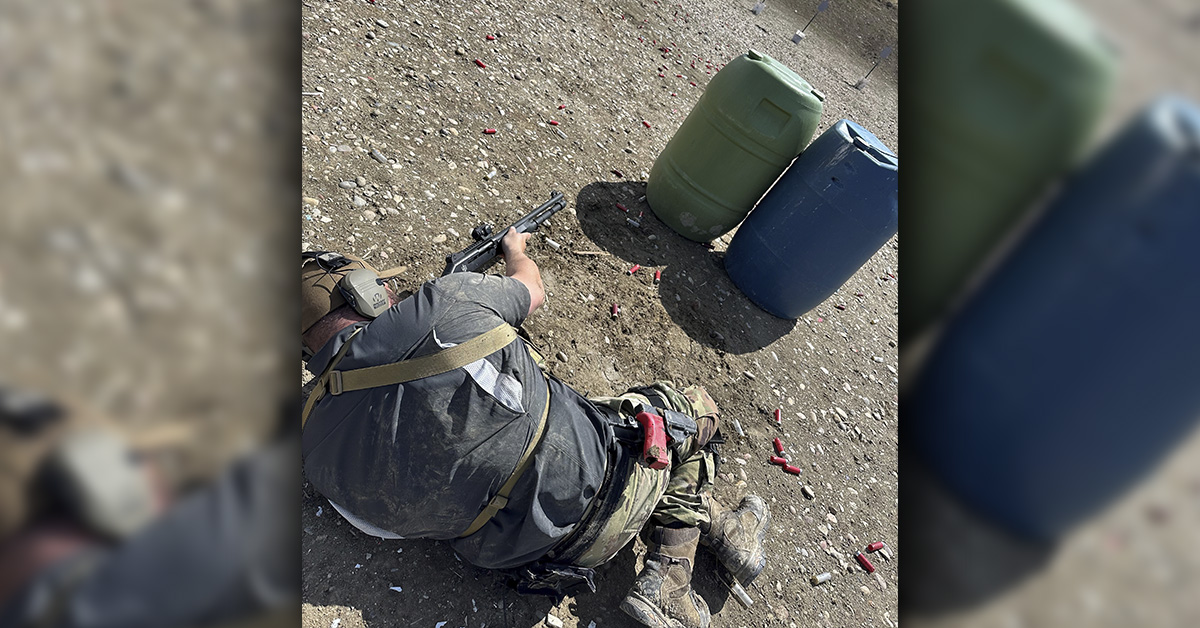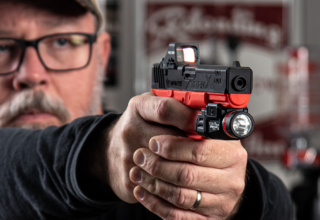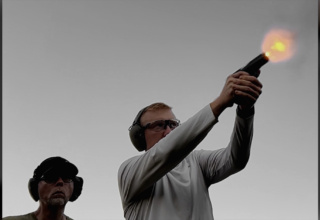Learn what separates the best shooters from the “not so much”
by Paul G Markel
The term “Tier 1 operator” has been around for a while, but it became vogue during the Global War on Terror. To be a Tier 1 operator means to be seen as elite, the tip of the spear, the top 1 percent. In the United States of America, we generally view the US Army Special Forces (Green Berets), the US Navy SEALs, Marine Corps Recon, and Air Force Combat Controllers as Tier 1 operators.
We also ascribe to these men, based upon their position, the status of firearms experts. Afterall, you can’t be Tier 1 and not be a master-class shooter, right? Is it actually a fact that all members of the United States Special Operations Command (SOCOM) are master-class shooters with rifles and handguns? If so, how did they get that way?
Mindset Über Alles
What sets a standard soldier, sailor, or Marine apart from the elite, Tier 1 troops? The answer is simple — mindset. While it is true that a candidate for the Special Forces or the SEALs must be in good physical shape, there are thousands of young men in the military who are strong and in good shape, but not all of them could qualify for these Tier 1 units.
Whether we are talking about the Army’s “Q” course, the Navy’s BUD/S, or USMC Force Recon “Indoc,” the first week or two are designed not so much to test physical ability but to test mental fortitude. Thanks to Hollywood, most of us know about the BUD/S bell. If a SEAL candidate rings the bell three times, they quit. They are out. There is a reason why they call it “Hell Week” in BUD/S training — they want to make you quit.
Marine Corps Boot Camp or Recruit Training is similar. The vast majority of failures or dropouts in Boot Camp occur during the first couple of weeks. Marine recruits who make it past the Phase 1 have about a 95% chance of graduating.
What military units throughout history have learned is that training a man’s body to become strong is far easier than training their mind to be strong. If the man has a strong mind, they can make their body strong and train it.
I recall a tale I heard many, many years ago when I was a young Marine. It was about the British SAS (Special Air Service/Commandos) selection training. The story went that during their indoctrination training, the men would be force-marched with full packs to the point of near total exhaustion. Eventually, they would see the trucks stationed on the side of the road to pick them up.
When the men got close, but had not quite reached the trucks, the drivers would fire up the engines and drive away. Any man who witnessed this and stopped out of anger or frustration was dropped from the program immediately. You see, the trucks actually only drove a short distance away, but were out of sight. This test was to see who would quit and who had the mental fortitude to keep going.
The Difference
For several years during GWoT, I was a part of a training cadre staffed by veterans turned military contractors. Over the course of several years, we trained thousands and thousands of young troops in Small Arms & Tactics. During that era, the standard weapons were the M4A1 and the M9 Beretta pistol.
All our students were put through marksmanship training and then at the end they had to pass a Qualification Course with pistols and rifles. Some qualified as Experts, the top rating, some as Sharpshooters, middle, some as Marksman, the lowest passing score, and a few would fail and have to be remediated.
In the previous situation, every man was issued what amounted to identical weapons and all the ammunition was standard issue. There were no tricked-out match-triggers or high-end match-grade ammo. Every man who attended our Expeditionary Combat Skills program met the physical qualifications to be on active duty. The playing field was completely level.
And so, with the previous being the case, how is it that men who were all given the same training, conducted the same practice drills, and used the same guns and ammo varied so greatly from Expert to unqualified? What was the “X” factor that made the difference?
Some of you might think that question is rhetorical. But I assure you it is not. The answer was not in the gear; the answer was the mindset or their determination to master the skill. Those who took the training seriously and made the mental commitment to follow it to the letter succeeded. Those who just went through the motions or arrived with the attitude that they were “already pretty good” failed to excel. Also, there were some students who, when the training got hard or they failed an exercise, simply checked out mentally and quit trying altogether.
Selection is a Never-Ending Process
Master Sergeant, Retired, Paul R. Howe, US Army Special Forces, Detachment Delta, said in his book Leadership and Training for the Fight, “Training, like selection, is a never-ending process.” At Student of the Gun, we have been saying, “You are a beginner once, a student for life” for well over a decade now. Both phrases have similar meanings.
There are several keys to success and mastery with firearms, particularly the handgun. In my book How to Shoot Better Than a Navy Seal, I elaborate on all of them. For this article I will give you two.
Consistency
One of the most important keys or factors for success with a handgun, or any physical endeavor that requires skill, is consistency or, better put, the consistent application of the absolute correct motions and movements — the fundamentals. Anyone can hit the “bullseye” once in a while. Our goal through consistency is to hit the “bullseye” every time, all the time, on demand.
With a handgun, your trigger press must be consistently perfect every time. Your sight alignment must be consistently perfect every time. You should have the same grip on the gun, every time. Your support hand should be in the same position, every time. If your shots are all over the place, sometimes here and sometimes there, your consistency is off.
When you read the previous paragraph, it sounds easy, but we all know that it is not. Doing everything consistently and correctly, every time, requires strict mental discipline. You must discipline your body to not just yank the trigger and hope for the best, which, as we know, just described 97 percent of the people shooting next to you on the public range.
Sculpture or Pottery?
When it comes to art, we have sculpture and pottery. Sculpture begins with a large piece of marble that is nothing special. The job of the sculptor is to remove everything unnecessary until the masterpiece is revealed. Pottery, on the other hand, is a process of continuously adding clay until you get what you want.
Firearms training is often conducted in both ways. We have those who believe that the road to mastery includes constantly adding things. They are always trying to add one more movement or another part/gadget that will make them better. That is the pottery way.
Then we have the sculptor method of firearms training. In this method, we will remove any and every moment that is not absolutely necessary to achieve our goal: hitting the target on demand, every time. Before we add any movements, gadgets, or gear, we first consider whether they are leading us to the aforementioned goal or are simply adding clutter to our masterpiece.
The Road to Mastery
Long ago, one of my peers and a friend who is also a trainer and retired Green Beret said, “Dude, there is no such thing as high-speed shooting. It’s all just the mastery of the fundamentals.” In the nearly two decades since, I can find no flaw in his logic, and I still appreciate the simplicity of the statement.
Far too often, American shooters fall into the trap of believing that they need just one more thing to bolt onto their gun to make them a “shoot better” or to be “more accurate.” Shooters who have not mastered the fundamentals try to engage in fast or “high speed” drills only to become frustrated. Rather than go back and master the fundamentals of marksmanship, that frustration leads them to go out and buy a different gun or more accessories.
Hearkening back to my Marine Corps days and some advice from my Primary Marksmanship Instructor, the man said to us, “It’s not the dope on the rifle, it’s the dope behind it.” Going back to our earlier discussion, when every man is shooting a stock M9 Beretta with a horrible “mil spec” trigger, how is it that some shoot Expert and some barely get by? It is not the gear; it is the man. It is their mindset, their mental fortitude, and the discipline they have.
That is how you can shoot like a Tier 1 operator.




















